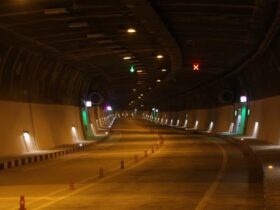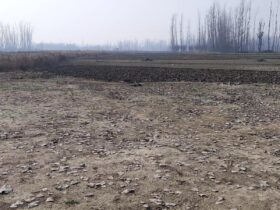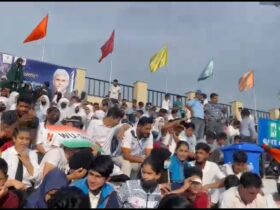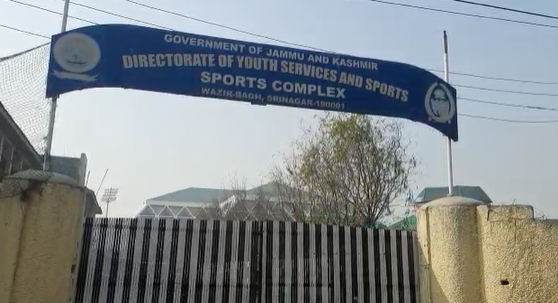Kashmir Scenario Exclusive
Srinagar: The paddy fields which a few decades back, were a main source of sustenance for the entire Kashmir valley, are fast falling to land mafia right under the nose of the authorities with commercial properties and housing colonies ubiquitous on agricultural land, grazing land and custodian property across the length and breadth of valley.
The authorities of the Revenue department have been found to be hand in glove with land mafia and have converted a vast chunk of agricultural and grazing land for commercial purposes. The state government despite knowing about the shrinking paddy and grazing land prefer to look the other way.
Brazen violation of the section 133 of the land Revenue Act seems to have taken place in Dandoosa and Narkara areas of district Srinagar.
“I have witnessed how agricultural land is converted for housing purposes. The land where you see palatial houses in Narkara and Dandoosa was actually agricultural land on papers. Land mafia with the help of officials of the Revenue Department helped in conversion of these paddy fields in to housing colonies. Near bypass you would be surprised to know even custodian land is being converted in to a housing colony,” said Mushtaq Ahmad a land broker from uptown Srinagar.
In district Ganderbal, the total paddy land in the year 2012 was 9091 hectares and astonishingly this year land under paddy is only 8400 hectares, a loss of 691 hectares in one year. In a span of just twelve months 691 hectares of paddy land was lost to illegal constructions including houses, commercial properties and the roadside Dhabas.
Over the years, many illegal colonies have come up on agricultural land in Ganderbal area majority of them being the shopping complexes constructed on the main road of Ganderbal which connects the Ganderbal district to the capital city of Srinagar.
Most of these commercial buildings are owned by businessmen who have close connections with the echelons of power.
“Most of the violations are done by the bureaucrats, businessmen and other officials who purchase large chunk of agriculture land and then convert it into residential colonies and subsequently sell it at exorbitant rates,” an official of the Revenue department said pleading anonymity.
Besides, the proposed construction of the 93 MW New Ganderbal Hydro-Electric Power Project is all set to consume around 200 kanals of agricultural land in areas like Beehama, Duderhama, Warpora, Arampora and the adjoining areas while hundreds of Kanals of land have already been consumed by the existing power projects in Sumbal, Kangan and Ganderbal areas.
The sprouting of these business units had even shocked the Governor of the state of Jammu and Kashmir NN Vohra who said that such constructions should be stopped to stop Kashmir from becoming a concrete jungle.
The area, once famous for its Cornfields, lush green paddy fields, small orchards and other visible signs of horticulture is now turning in to a concrete jungle.
‘The price of the land has sky-rocketed and the owners no more relish the prospect of working tirelessly in the fields. They instead sell the land and do business with the money,” a Revenue official said.
The people in the district of Kulgam, Budgam and Ganderbal( known as the rice bowls of Kashmir a few years ago)no more take to fields and there seems to be a rat race to either convert the fields in to orchards to sell off the land and start doing business.
This alarming trend is seen by many as a direct implication of easy lifestyle that has engulfed people across the length and breadth of the valley.
“I think people want an easy life. Who would like to slog hard in the fields when there is an easy alternative of selling the land and leading an easy life? People in the countryside no more take to fields. We have to import labours from outside the state for reaping of harvest. I think absence of a proper labour class is leading to this trend,” senior columnist Zahid Ghulam Muhammad told The Kashmir Scenario.
This version of “absence of a proper labour class” is corroborated by various British travellers who visited Kashmir during Sikh and Dogra rule. The British travellers like Sir Walter Lawrence, Vigne, Francis Younghusband asribe absence of a proper labour class for the menace of Begar(Forced Labour).
While absence of a proper labour class is being seen as the reason why people are selling off paddy fields, shrinking glaciers and a boom in horticulture is also ascribed as a major reason for the shrinking rice bowls of Kashmir.
“The fact that glaciers are melting at a faster pace and the boom in horticulture has made working in paddy fields less profitable. Paddy demands more labour and a perennial water supply. With glaciers receding at a faster pace less water is available. Horticulture demands lesser water and lesser man force. So we see this trend of people converting their paddy fields in to orchards,” says shreen Tramboo a Scholar of Sociology at the University of Kashmir.
Action aid, an international NGO states in its report that in kapran area in Anantnag the length of the Hangipora glacier has reduced from 35ft to 10ft and the Naaginad glacier has reduced from 30ft to 10ft
In south kashmir villages of chaklipora and Kapran, the amount of yearly snowfall has reduced to more than half.
“Poverty and hunger, educational deficiencies, unstable households, family Structure, social unrest, increased urban migration, food Scarcity and health Hazards due to excess use of Pesticides are the major factors why paddy fields are converted in to orchards or used for commercial purposes,” says a scholar of Economics at the University of Kashmir.
While the state has laws that prevent conversion of agricultural land for some other purposes, there are loopholes in the law that people exploit for their benefit.
“Section 133 of the Land Revenue act prevents agricultural land from being converted for housing or commercial purposes. However, the law is not water-tight and there are loopholes in this law,” Advocate Mehraj akram told The Kashmir scenario.
A bill was recently introduced in the lower house of the state legislature and after a brief discussion and certain demands of the members it was referred to a select committee for further study and suitable recommendations.
The meeting of the joint select committee of legislators of both the houses was held recently under the chairmanship of state Revenue Minister Ajaz khan over the proposed government Bill on prohibition of conversion of agricultural land for non-agricultural purposes. All the departments connected with the issue including Revenue, Housing, Agriculture and Law.
Earlier in the year, the Jammu and Kashmir High Court Tuesday had directed the state government to ensure that no conversion of agricultural land is allowed for commercial, residential and industrial purposes.
Hearing a clubbed Public Interest Litigation (PIL) seeking to restrict growing conversion of agricultural land for other purposes, a division bench of High Court comprising Chief Justice M.M Kumar and Justice Ali Muhammad Magray had directed the government through Advocate General, M I Qadri to ensure complete halt on conversion of agriculture land. The court passed the directions following submission of Advocate J I Ganai representing a petitioner that government is winking eyes to the conversion of agriculture land for the uses of other purposes along Khannabal- Pahalgam road in Anantnag district in violation of law.
“The entire state administration seems to be taking the issue lightly as despite the rulings of the state High Court, rampant constructions are going on in the paddy fields. If government does not speed up the process of bringing newer laws to curb this menace a day may come when we may not produce a single grain of rice,” said Mudasir Ahmad a student of the University of Kashmir.
| Department of agriculture statistics (Courtesy shireen Tramboo) | ||||
| Year | Production | Population | Requirement |
%deficit |
| 1980-81 | 486 | 3269276 | 559 |
23 |
| 2005-06 | 620 | 5985340 | 1023 |
40 |
| The region is 44% deficit in flood production and 30% in Veg production | ||||
















Leave a Reply